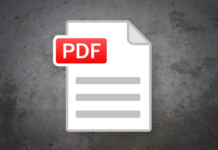Since its launch in 1985, Microsoft Excel has been the go-to choice for creating and managing spreadsheets. Despite the presence of other spreadsheet tools in the market, none have managed to rival Excel’s popularity and functionality – until the introduction of Google Sheets. Initially seen as a basic alternative to Excel, Google Sheets has grown to become a robust tool for a variety of data storage and analysis needs.
While Google Sheets and Microsoft Excel are both powerful tools for working with data, they have some key differences. Whether you’re a business owner looking to streamline your data management, or a student trying to organize your notes, it is crucial to understand the features and functionality of Google Sheets and Excel to make the most of each tool.
Google Sheets Vs Excel: What are the Differences?
Ease of Use –
Google Sheets has a more user-friendly interface and is easier to navigate than Excel. Google Sheets is also more intuitive and requires less training. On the other hand, Excel has a steeper learning curve and requires more technical expertise to use effectively.
If you have any doubt with google sheets you refer to a lot of online resources, and similarly there are multiple excel courses online that can help you get a detailed insight into the use of this tool
Price
Google Sheets is a free, web-based tool that is available to anyone with a Google account. Microsoft Excel, on the other hand, is a paid software that is part of the Microsoft Office Suite.
A one-time purchase of Office 2019 for home and students is $149.99 and Office 365 (which includes Excel) starts at $6.99/month. However, Excel is also included in various Office 365 subscription plans, which can be a cost-effective option for businesses and organizations.
Tool for Statistical Analysis & Visual Representation –
Both Google Sheets and Excel have various built-in tools for statistical analysis and visual representation. Excel offers a wide range of chart types and advanced functions such as pivot tables, while Google Sheets offers more limited chart options.
However, Google Sheets has a strong add-on ecosystem that provides additional functionality. Excel also has an extensive range of built-in functions like SUMIFS, COUNTIFS, and INDEX-MATCH which makes it more versatile for data analysis..
Scope for Collaboration –
Google Sheets is designed for collaboration, allowing multiple users to work on the same document simultaneously. It also has built-in commenting and revision history features, making it easy to track changes and communicate with team members.
Excel, on the other hand, is more suited to individual use, although it does have the ability to share workbooks and track changes.
Capacity & Performance –
Both Google Sheets and Excel can handle large amounts of data, but Excel may be more suited to working with very large data sets. Google Sheets can handle around 2 million cells, while Excel can accommodate up to 1,048,576 rows and 16,384 columns. Additionally, it also has more powerful data processing capabilities and can handle more complex calculations.
Data Security –
Google Sheets and Excel both use AES-256-bit encryption to protect user data both at rest and in transit. This means that all data stored on their respective servers is encrypted and can only be accessed by authorized users. Additionally, Excel also has the option to use secure sockets layer (SSL) or transport layer security (TLS) encryption to protect data in transit.
Furthermore, Google Sheets supports two-factor authentication (2FA) to provide an additional layer of security for users’ data. While Excel does not have built-in 2FA support, users can enable 2FA for their Microsoft account, which is required to access Excel.
Macros & Scripting –
Excel has built-in support for macros, a set of instructions that can automate repetitive tasks. Macros can be recorded using the built-in macro recorder or created using Visual Basic for Applications (VBA) code. Excel macros can automate a variety of tasks such as data entry, formatting, and data analysis. Google Sheets also supports macros, but it is not as advanced as Excel.
While Excel supports scripting using Visual Basic for Applications (VBA) which allows users to automate tasks using programming, Google Sheets uses Google Apps Script which is a similar language to VBA.
Features –
Excel offers an advanced version of several features such as VBA scripting, macros, and add-ins, making it more powerful and versatile than Google Sheets. It also has more advanced data analysis tools such as pivot tables and powerful charting options.
However, Google Sheets has a strong add-on ecosystem that provides additional functionality such as Supermetrics, Autocrat, Power Tools, Google Analytics, etc.
Which one is better- Google Sheets or Excel?
Both Google Sheets and Excel have their own set of strengths and weaknesses, and the choice between the two will depend on your specific needs and requirements.
Google Sheets is a free, easy-to-use tool, well-suited for collaboration and simple data analysis. It is a viable option for small businesses, students, and individual users who need to work on a budget and do not require advanced data analysis tools. Google Sheets also has a user-friendly interface and is easy to navigate, making it a convenient choice for those who are less technically proficient.
Excel, on the other hand, is a more powerful and versatile tool that is better suited to complex data analysis and large data sets. Excel is suitable for businesses, organizations, and advanced users who need to work with a large amount of data and require more sophisticated data analysis capabilities.





